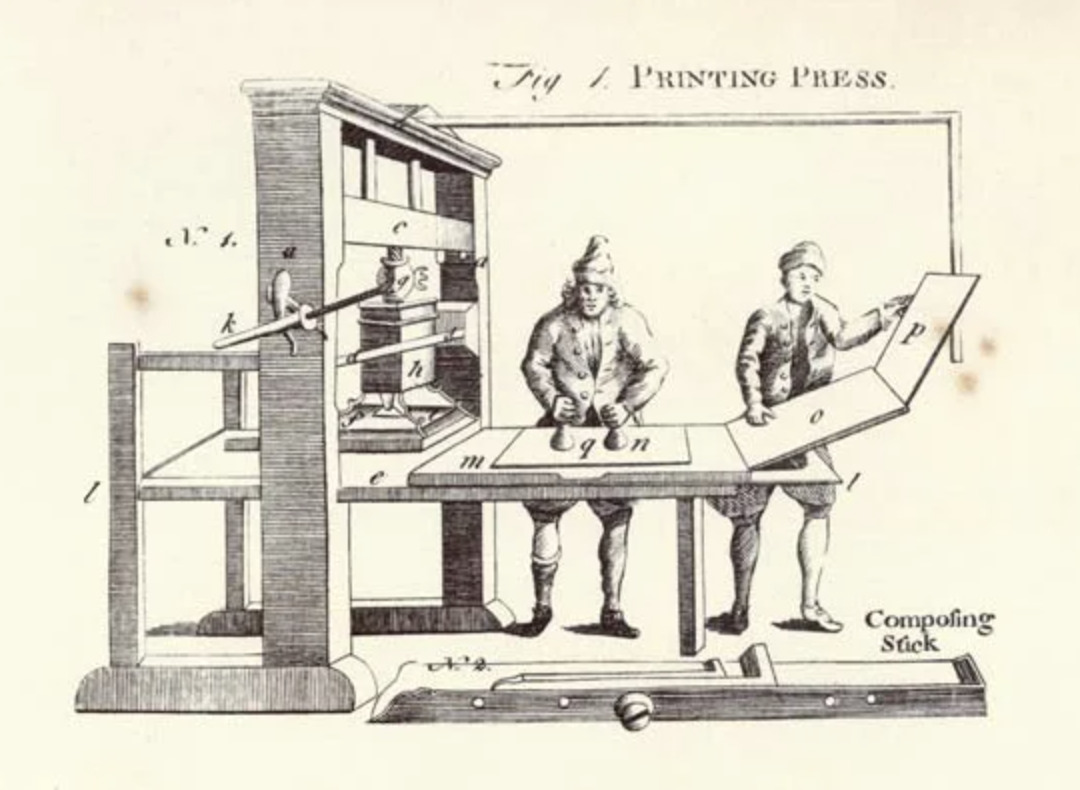Early Modern Period of Print Culture and Bookmaking
The early modern period in Africa saw a significant transformation in print culture and bookmaking, largely driven by the arrival of European missionaries and colonial powers (Adu-Gyamfi 214). European missionaries introduced printed books to the continent, primarily for religious conversion and education (Read African Books 2). Colonial administrators and traders also played a crucial role in controlling what was published and determining the audience for such works (Davis 379). Because of all of this, the narratives and perspectives that were being printed aligned with colonial interests, while Indigenous voices and stories were marginalized (Davis 377).
Missionary Publishing Efforts
In Nigeria, the Presbyterian mission was notable for publishing various educational and religious materials by 1849. Similarly, in South Africa, the Wesleyan Missionary Society published the first irregular quarterly newspaper intended for a Black audience in 1837. Later, in 1876, the Lovedale Mission Press published the first African newspaper edited by Africans (Adu-Gyamfi 221).
The Gutenberg Press and its Impact
The Gutenberg press, developed by Johannes Gutenberg in the mid-15th century, revolutionized book production by introducing movable type printing (Gambee 78). This innovation enabled the mass production of books, making them more accessible to a wider audience compared to earlier manuscript copying methods. Moveable type printing is what the Lovedale Press used. The materials used in this process included high-quality rag paper and oil-based inks (Britannica 1). The production of books like Equiano's would have required the collaboration of several skilled workers, including typesetters, printers, and binders, using a press like this (Green 364).
Impact of the Roman Script
The introduction of the Roman script facilitated the graphization of many African languages for the first time, providing a medium for written communication and literacy education in local languages. The success of these efforts, however, was mixed. Languages such as Zulu, Xhosa, Swahili, and Yoruba became mediums for commercial print publications, while many other African languages did not develop a robust print culture. The production of literature in African languages remained limited, focusing primarily on religious texts, educational materials, and a few genres like novels and stories (Pasch 67).
Post-Independence and Indigenous Publishing
Following the independence of African nations, there was a push for the establishment of indigenous publishing houses to create literature that resonated with the African experience and identity (Read African Books 1). This movement was driven by a desire to break away from the narratives imposed by colonial powers and to produce works that reflected the realities and aspirations of African societies. However, the new indigenous publishers faced numerous challenges, including economic constraints, competition from multinational publishers, and a lack of government support (Davis 378). Despite these obstacles, parastatal and independent indigenous publishing houses emerged as the modern period continued, particularly in the 1970s and 1980s, marking a significant shift in the landscape of African literature (Davis 379).


